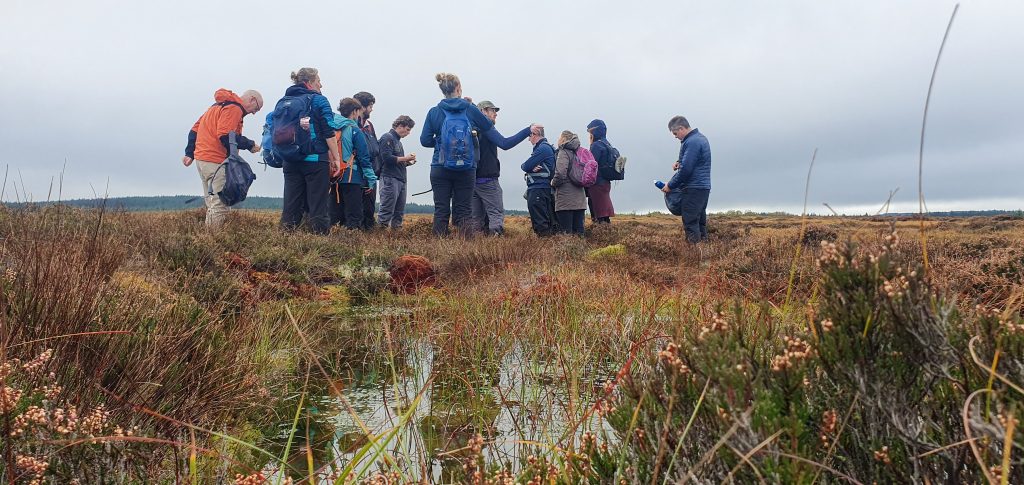Evidencing land management outcomes and advocating for peatlands
I’m back from the IUCN UK Peatland Programme in Derry with Moors for the Future Partnership, connecting with people and organisations involved in caring for peatlands and restoring these special places. Peatlands need restoring because they have been damaged through land management choices (e.g. draining), air pollution (e.g. industrial revolution in UK), and the ongoing threat of climate change. Degraded peatlands are impaired from delivering ecosystem services and value to society that they once did – such as regulating rainfall runoff, providing habitat, storing carbon…
The good news is that we can restore peatlands and fantastic progress is being made, thanks in large part to the dedication of the IUCN peatland programme in advocating for peatlands and fostering a community of practitioners and experts. I was interested to learn in the meeting that the wildlife trusts were founding members of the IUCN (International Union for the Conservation of Nature).
Despite amazing progress on peatland resotration reported at this meeting, the Peatland Strategy Progress Report 2024 has still classified the UK conservation status of all peatland habitat types as “Bad” and considered only 9 % to be in favourable condition. This puts the existing good progress into perspective and highlights the continuing need to advocate for peatlands, including the creation of good quality jobs in the environmental restoration sphere.
Two key points for me came out in this meeting that are relevant to the collaborations I am involved in with University of Derby and Moors for the Future Partnership. (we work on the microbial ecology responses to peatland restoration and the role of microbes in landscape-scale functioning including the carbon cycle and water quality – a topic for a separate post).
First, there is a strong recognition of the need for monitoring and evidencing the outcomes of restoration practice, including baselining and basic research too. This is needed to be able to report progress and plan actions. The Peatland Strategy Progress Report 2024 stated that “budgets for monitoring have been inadequate; our assessment suggests that > 50% of peatland sites across the UK have not been monitored in over a decade … This means that decisions around appropriate management may be made on out-of-date evidence and recorded trends may not be realistic”. The gathering of data and performing research also supports better understanding of peatland restoration which can then enhance practice.
Second, we need to continue to advocate for peatlands, communicate their value, and get this recognised in policy in order to sustain and enhance peatland restoration, along with jobs and career pathways for environmental professionals.
